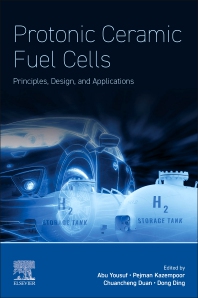Books in Renewable energy and alternative technologies
Books in Renewable energy and alternative technologies
- 1st Edition
- February 1, 2026
- Abu Yousuf + 3 more
- English

Protonic Ceramic Fuel Cells
- 1st Edition
- February 1, 2026
- Zafar Said + 1 more
- English

Solar Stills for Sustainable Water Purification
- 1st Edition
- February 1, 2026
- Yasser Vasseghian + 2 more
- English

Green Hydrogen Generation from Biomass
- 1st Edition
- January 1, 2026
- Felix Rojas Lobos + 2 more
- English
- Paperback9 7 8 0 1 2 8 1 6 8 7 0 7
- eBook9 7 8 0 1 2 8 1 6 8 7 1 4

Power Electronics for Solar and Wind Energy Conversion Systems
- 1st Edition
- January 1, 2026
- Yanping Yuan + 4 more
- English
- Paperback9 7 8 0 4 4 3 2 1 6 9 6 1
- eBook9 7 8 0 4 4 3 2 1 6 9 7 8

New Technology for Solar Photovoltaic/Thermal Comprehensive Utilization Systems
- 1st Edition
- January 1, 2026
- Preshanthan Moodley + 1 more
- English
- Paperback9 7 8 0 4 4 3 2 6 7 0 2 4
- eBook9 7 8 0 4 4 3 2 6 7 0 3 1

Advances in Biogas Technology Systems
- 1st Edition
- January 1, 2026
- Adarsh Kumar Pandey + 1 more
- English
- Paperback9 7 8 0 4 4 3 2 7 4 8 4 8
- eBook9 7 8 0 4 4 3 2 7 4 8 5 5

Navigating a Sustainable Future with Phase Change Materials for Energy Storage
- 1st Edition
- January 1, 2026
- Sara Golroodbari + 1 more
- English
- Paperback9 7 8 0 4 4 3 2 8 8 3 4 0
- eBook9 7 8 0 4 4 3 2 8 8 3 5 7

Floating PV Systems
- 1st Edition
- January 1, 2026
- Anik Goswami + 3 more
- English
- Paperback9 7 8 0 4 4 3 3 3 7 7 3 4

Floating Photovoltaics
- 1st Edition
- January 1, 2026
- Dasheng Lee + 2 more
- English
- Paperback9 7 8 0 4 4 3 3 6 7 2 9 8
- eBook9 7 8 0 4 4 3 3 6 7 3 0 4
